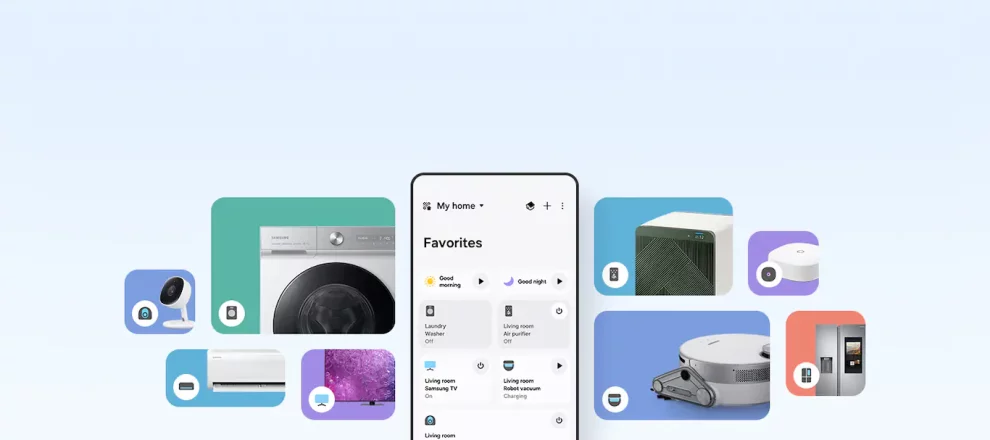Connecting smart home devices from different brands into one unified platform remains an elusive dream for many homeowners. With various proprietary apps and ecosystems, achieving whole-home control can feel frustratingly out of reach.
However, while no perfect solution yet exists, several smart approaches allow more centralized management across vendors. By understanding the current landscape and exploring workarounds, you can craft an integrated smart home experience.
The Fragmented Nature of Smart Home Tech
For all the convenience smart home devices promise, most operate in closed-off, branded worlds. The app that controls your Philips Hue lights likely won’t talk to your Schlage smart lock or LG appliances.
Each gadget connects to its own manufacturer’s app, usually via Wi-Fi or a proprietary wireless protocol. So, while stand-alone devices work fine, getting them to communicate across brands generally requires some technical gymnastics.
The Lure of Seamless Integration
Many homeowners yearn for an elusive one-app-to-rule-them-all approach for smart home management. No longer having to juggle multiple apps would allow easier control and unlock more automation power.
For instance, you could create scenes tying together mood lighting, music, heating, and security equally across brands – all from a single dashboard.
However, until recently, no open standard facilitated this level of unified cross-vendor interoperability. But various workarounds and an emerging solution aim to finally bridge smart home islands.
Current Options for Centralized Management
If struggling with a disjointed array of apps barely talking to each other sounds familiar, take heart. Several approaches allow more unified multi-brand smart home control today.
Smart Home Hubs
One popular option is connecting devices to a smart home hub. These centralized controllers allow interacting with gadgets via one app, no matter the vendor.
Major players include:
Their hardware acts as a translation layer between various wireless protocols. Popular choices like Zigbee, Z-Wave, and Wi-Fi allow supporting many brands under one roof through a simplified interface.
Where They Fall Short
However, some limitations still apply:
- Not all devices fully compatible
- Restricted feature support for some gadgets
- May need proprietary hub hardware
- Often requires cloud connectivity
So while hubs undoubtedly help centralize multi-brand environments, eccentric gadgets might still require vendor-specific apps for advanced controls.
Platform Integrations
Alternatively, web platforms like IFTTT and Zapier focus on automations instead of real-time control. Their applets bridge internet-connected devices, triggering actions when specific events occur.
For example, an applet could:
- Lock your August smart lock when your Nest Protect detects smoke
- Turn off Philips Hue lights when everyone leaves the house per your Life360 app
The benefit is connecting gadgets that hub ecosystems don’t always support. However, applets provide reactive experiences instead of complete device dashboards.
Matter Promises True Interoperability
An emerging smart home standard called Matter aims to finally deliver the automation dream, though. Backed by leading vendors, Matter utilizes IP networking for unified device communication.
That means future gadgets bearing the Matter logo should seamlessly interoperate between apps and platforms. No longer needing brand-specific translators, support promises tight integration rivalling proprietary ecosystems.
While in early days, Matter should see rapid adoption once launches. Support undoubtedly comes too late for existing devices but provides future interoperability.
Tips for Managing Today’s Fragmented Landscapes
Until the Matter standard reaches maturity, smart home consumers must carefully balance solutions. Consider these tips for wrangling multi-vendor environments long-term.
Embrace Some App-Switching
First, accept that completely eliminating vendor-specific apps remains unlikely, even with Matter adoption.
Unique devices will always launch requiring proprietary software, so organize apps logically:
- Group by room for location-based control
- Prioritize everyday apps prominently on your home screen
- Hide niche gadget controls in folders
The goal is reducing daily app overload rather than eliminating switching outright.
Automate Repeated Actions
Carefully setting up automations also minimizes app-hopping pain. Program triggers like:
- Activating scene lighting when doors unlock
- Adjusting thermostats when sleep schedules start
Proactively automating eliminates constantly adjusting individual devices manually.
Design Holistic Routines
Expand beyond basic automations with multi-limb routines performing coordinated actions. Think movie night mode, energizing wakeup playlists, or bedtime wind-downs.
Group routines logistically in your control platform or hub for one-tap access. Mix various brands to suit your lifestyle.
Focus on New-Device Compatibility
When purchasing additional gadgets, scrutinize smart home platform compatibility beyond standalone capabilities.
Favor devices boasting integration with major players like SmartThings, Alexa, Google Assistant, HomeKit, or IFTTT.
Cross-platform products better fit multi-vendor environments over only working with proprietary apps.
Regularly Update Firmware
Don’t neglect periodic firmware updates either — annoying as they may be. Patching improves device reliability while unlocking new compatibility often.
Manufacturers constantly tweak protocols and wireless chips to play nicer with others. Stay updated to benefit.
The Smart Home Management Dream Still Coming
One app curating all devices effectively remains a futuristic fantasy for most smart homeowners currently.
However, don’t abandon hopes of centralized cross-vendor control just yet. Matter and continued innovation promise more unified experiences yearly.
Until then, explore using multiple approaches in parallel — including hubs, platforms, and automation tools.
With careful planning, you can craft a reasonably seamless smart living environment mixing gadgets from across brands.
















Add Comment